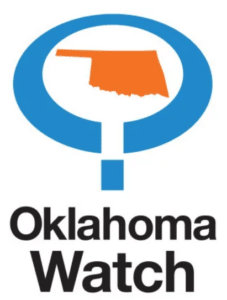
Parent and teacher Sandra Valentine doesn’t place much stock in state test scores. Released months after the school year ends, the scores aren’t much more than a number on a computer screen.
In one-on-one conversations with her daughter’s teachers, they discuss benchmark scores, not state test results, because those are current and more relevant.
“That’s the info I value more,” Valentine said.
The scores for the 2024-25 school year, published online this week, come with a caveat: they look significantly lower than last year, but students didn’t learn less. It’s due to changes in what the state considered proficient.
In 2024, the state lowered the bar, temporarily inflating scores. This year, they raised it back.
The new scores show about a quarter of Oklahoma students hit grade-level targets in English language arts. In math, about a third of students met expectations in elementary school but the rates dropped to a quarter in sixth and seventh grades and 17% in eighth grade.
Superintendent of Public Instruction Lindel Fields, who was sworn in this week to fulfill the remainder of Ryan Walters’ term, and Megan Oftedal, executive director of the Office of Educational Quality and Accountability and a member of Fields’ turnaround team, described these changes in messages to teachers and parents this week.
“Scores may look lower, but what they show is more meaningful,” Oftedal said in a written statement. “Raising expectations helps everyone — parents, teachers and schools — see more clearly where students are thriving and where they may need extra support.”
Oklahoma raised the bar for proficiency in 2017 to close the honesty gap: a discrepancy between how students score on state tests compared to tests such as the National Assessment of Educational Progress, or NAEP, and the ACT and SAT.
Each spring, schools administer English language arts and math exams to third through eighth graders; fifth and eighth graders are also tested in science and high school juniors take exams in U.S. history and science in addition to the ACT.
Questions remain about next spring’s state tests. Walters announced in August that he was pursuing major changes through a waiver from the U.S. Department of Education. A four-page request posted online described his plan to replace state tests with benchmark assessments and accept alternatives to the ACT in high school.
However, the waiver has not been formally submitted, a U.S. Department of Education spokesperson said Tuesday.
Students’ scores in 2025 are on par with 2023 in most subjects and grade levels (the commission that sets proficiency levels, or cut scores, advises comparing 2023 to 2025 since 2024 is an outlier).
There were slight gains of 1%-2% in sixth through eighth grade math and seventh and eighth grade English compared to 2023. Every grade and subject remains 5%-10% below pre-pandemic scores from 2019, when proficiency rates averaged 32% in math and 33% in English.
The percentage of students who scored at least proficient in each grade and subject, according to Department of Education data:
- In third grade, 27% in English language arts and 33% in math;
- In fourth grade, 24% in English language arts and 33% in math;
- In fifth grade, 26% in English language arts, 27% in math and 33% in science;
- In sixth grade, 25% in English language arts and 24% in math;
- In seventh grade, 22% in English language arts and 25% in math;
- In eighth grade, 21% in English language arts, 17% in math and 35% in science;
- In 11th grade, 20% in science and 41% in U.S. history.
Oklahoma Watch, at oklahomawatch.org, is a nonprofit, nonpartisan news organization that covers public-policy issues facing the state.
Jennifer Palmer has been a reporter with Oklahoma Watch since 2016 and covers education.





